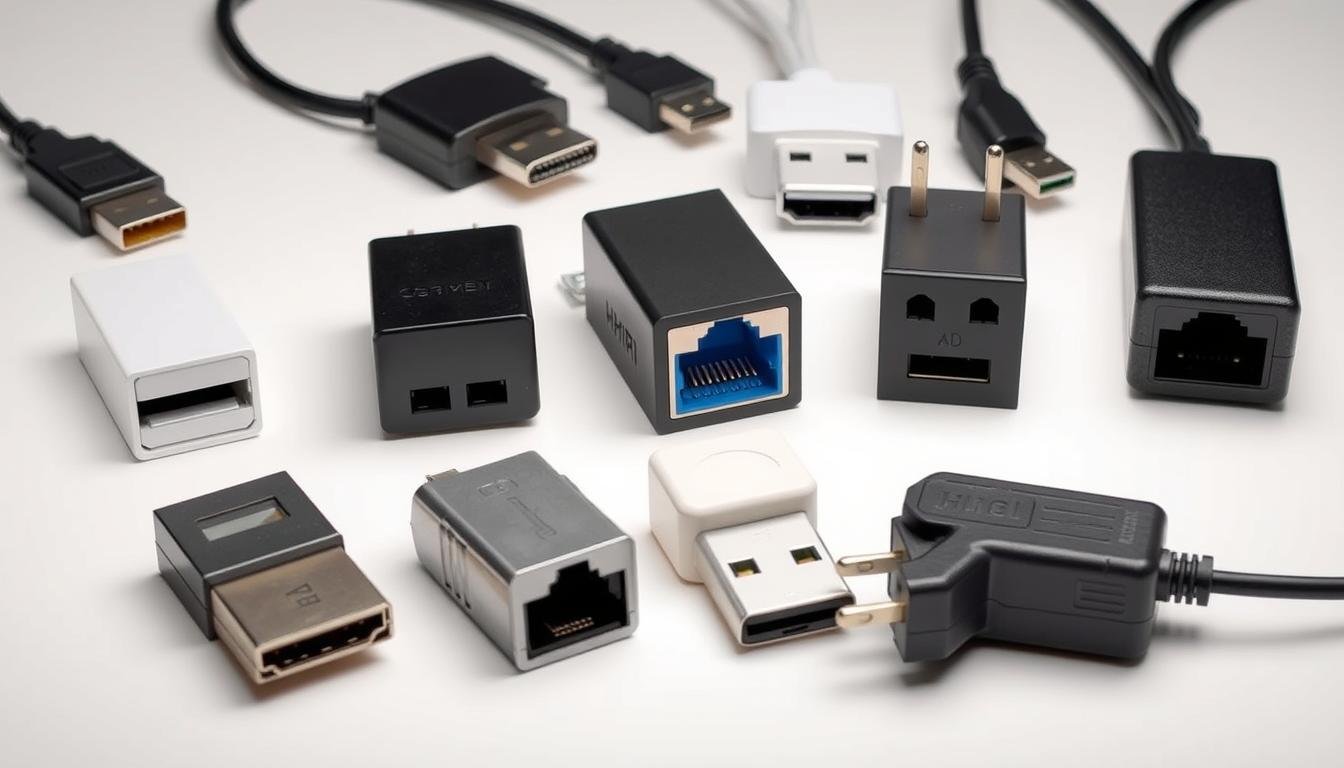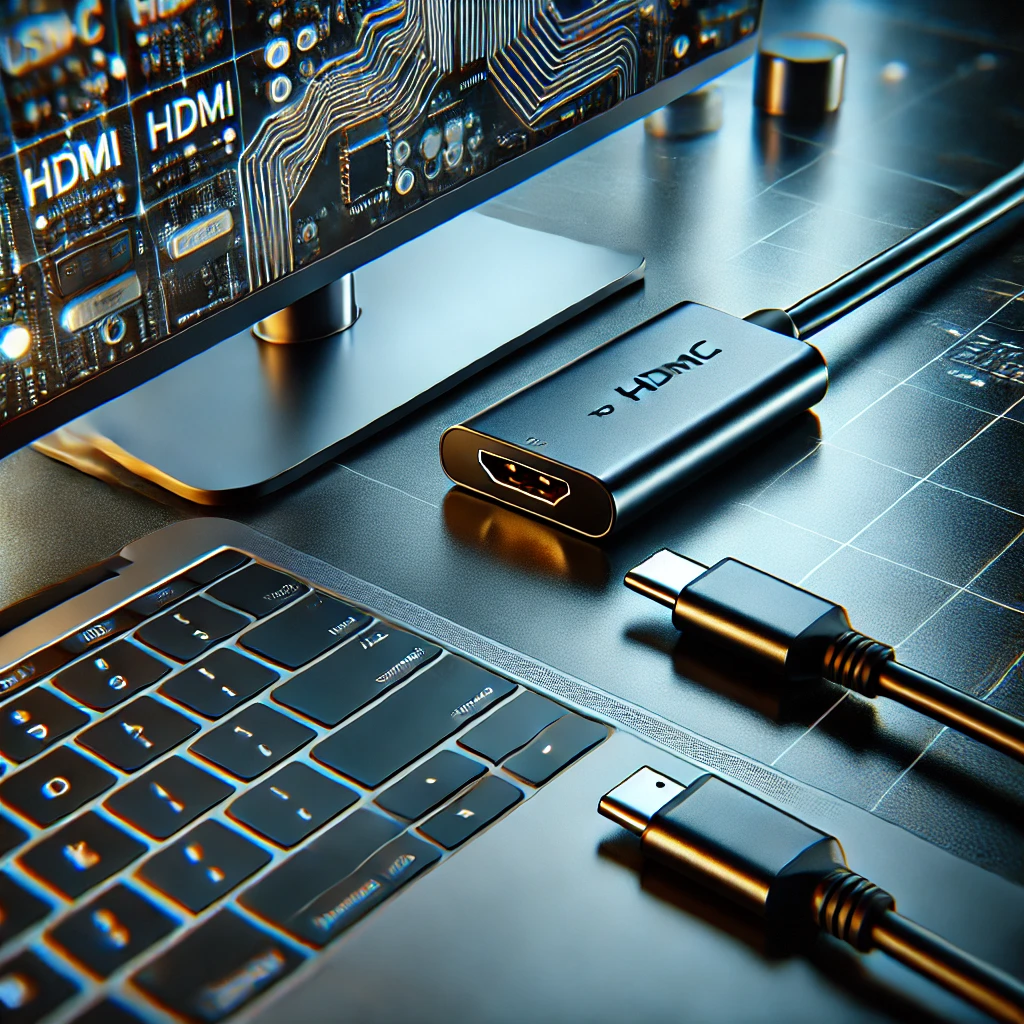What is an adapter? It is a small device that lets one plug fit into another socket so a phone, laptop, or charger can connect. This guide makes the question what is an adapter easy to follow for travelers, professionals, and home users.
Global power standards complicate travel. There are 14 main plug standards (Types A–N) and national mains range from 100 to 240 V. A power adapter changes plug shape only. A separate voltage converter or transformer is required when voltages differ.
This Ultimate Guide previews categories like power and plug adaptors, USB wall chargers, display dongles, audio and network adapters, and travel power strips. It also shows where to buy in the United States—airports and big-box retailers—and how to check safety marks like UL and CE to avoid overheating or overload.
Key Takeaways
- Understand the basic role of a plug or power adapter and when a voltage converter is needed.
- Know there are 14 global plug standards and wide voltage variation across countries.
- Learn which products—universal travel adapters, USB chargers, or power strips—fit each trip.
- Find common U.S. buying options and safety marks to look for.
- Gain a simple decision process to pick the right connector for devices and travel.
Introduction To Adapters
A compact device often decides whether your phone charges in a new country. These small interface tools make plugs and ports compatible so devices can draw power from unfamiliar sockets.
Power adapters are also known as travel adapters, plug adapters, electrical adapters, and mains travel adapters. A typical unit measures roughly 2 x 2 x 1 inches and has pins that vary by plug standard.
“Always match plug shape and the voltage rating on the charger label to protect gear and avoid failure.”
Adapters solve physical fit; they do not change voltage. Converters or transformers handle electrical differences. Many modern chargers accept wide-range input, but users should verify the label before use.
- Use for international travel, peripherals, home office upgrades, and bridging legacy and modern devices.
- Check both plug shape and voltage when visiting any country.
- Buy reputable brands and look for UL or CE marks to reduce risk.
| Context | Common Need | What to Check |
|---|---|---|
| Travel | Plug fit for foreign power outlets | Pin shape, voltage, charger label |
| Home | Connect legacy chargers to modern sockets | Compatibility, surge protection |
| Office | Share ports across devices | Wattage, dual-voltage support |
For a deeper practical guide and historical context, see a concise overview at what is adapter and a historical overview.
What Is An Adapter?
When a charger won’t fit a wall outlet, a simple interface device makes the connection possible.
A power adapter is a shape-changing intermediary that lets a plug from one country mate with a foreign socket while leaving the original electrical path intact.
Power And Plug: How Adapters Bridge Devices And Outlets
Key function: change the plug geometry so a laptop, phone, or other device can plug in overseas. It does not alter incoming voltage.
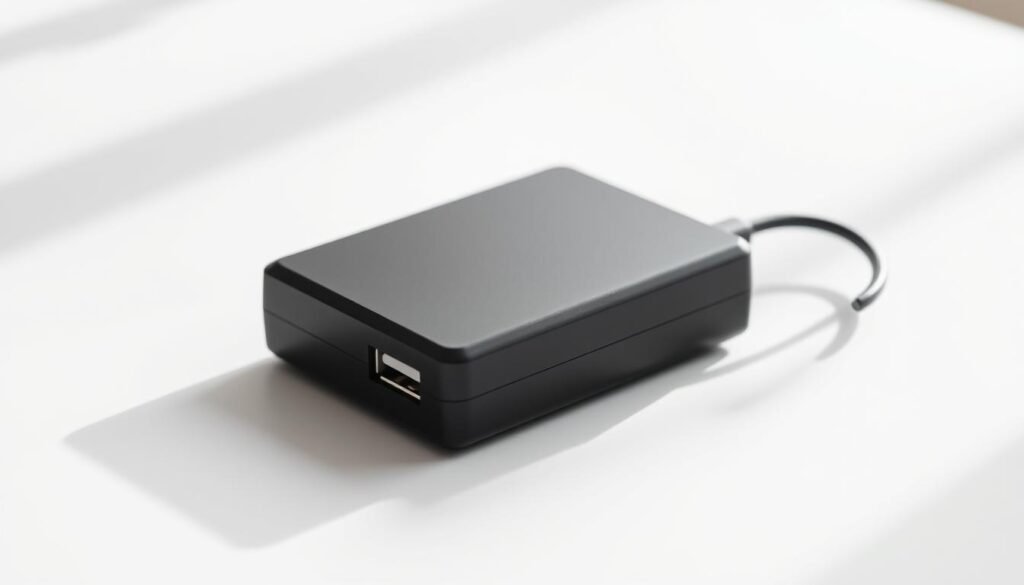
Adapter Vs. Converter: Shape Changes Versus Voltage Changes
The comparison is simple. A converter or transformer changes voltage or frequency. A plug interface only reshapes pins.
“Read the charger label: ‘Input 100-240 V, 50/60 Hz’ usually means no converter is needed — only the correct plug interface.”
- Check device requirements before travel to avoid damage.
- High-draw single-voltage appliances may need a converter in addition to a plug adapter.
- It is possible to stack a converter with a plug interface, but bulk and heat are concerns.
| Need | Solution | When to Verify |
|---|---|---|
| Only plug shape differs | Plug interface or plug adapter | Check charger label for input range |
| Voltage mismatch | Converter or transformer | When device is single-voltage |
| Multiple countries | Universal travel connector set | Confirm local plug standards (A–N) |
For practical buying and safety tips, consult a concise guide to power adapters and converters before packing. The next section outlines core adapter families beyond power, including USB, audio, and network solutions.
Types Of Adapters Explained
Choosing the right connection gear makes charging and AV setups work across borders. This section outlines common categories so a traveler, student, or professional can match gear to needs.
Power Adapters And Plug Adapters For International Outlets
Power and plug options cover simple plug conversions and full travel kits. A basic power plug adapter changes pin shape only. A universal power adapter supports multiple regions and sometimes adds surge protection.
USB Adapters: USB‑C, USB‑A, And USB To HDMI/VGA
USB solutions include USB‑C to USB‑A, USB‑C to HDMI or VGA for presentations, and USB Wi‑Fi sticks to add wireless to older systems.
Audio Adapters: 3.5 Mm, 1/4 Inch, And Optical Options
Audio gear ranges from 3.5 mm to 1/4 inch for studio headphones to optical (TOSLINK/mini‑TOSLINK) for clean digital links to AV receivers.
Network Adapters: Ethernet Dongles And Wi‑Fi Solutions
USB‑to‑Ethernet dongles provide reliable wired access. Wi‑Fi range extenders boost coverage in hotel rooms or apartments with weak signals.
Universal Travel Adapters, USB Wall Chargers, And Power Strips
Travel chargers and power strips let users charge multiple devices from one outlet. Consider weight, port count, and whether a voltage converter is needed for single‑voltage appliances.
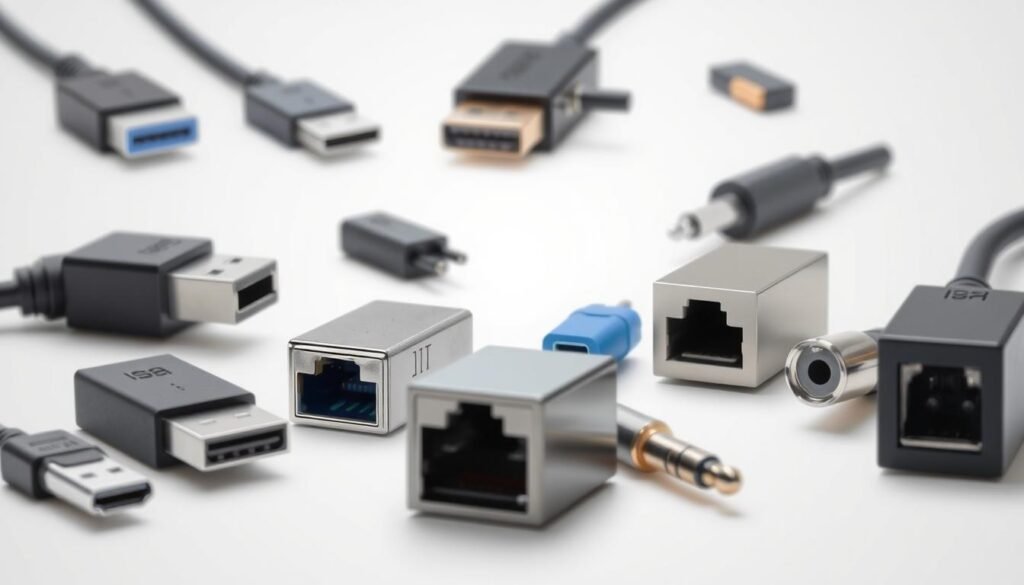
| Category | Common Use | Pros | Limitations |
|---|---|---|---|
| Power/Plug | Match outlet shape | Light, simple | No voltage change |
| USB & Display | Charge, present, connect monitors | Compact, multi‑port | Compatibility varies |
| Audio | Headphones, studio, AV | Better signal paths | May need adapters for legacy gear |
| Network | Wired/Wi‑Fi improvements | Reliable connectivity | Extra dongles add bulk |
Adapter Types
A small selection of common connection solutions covers most travel scenarios.
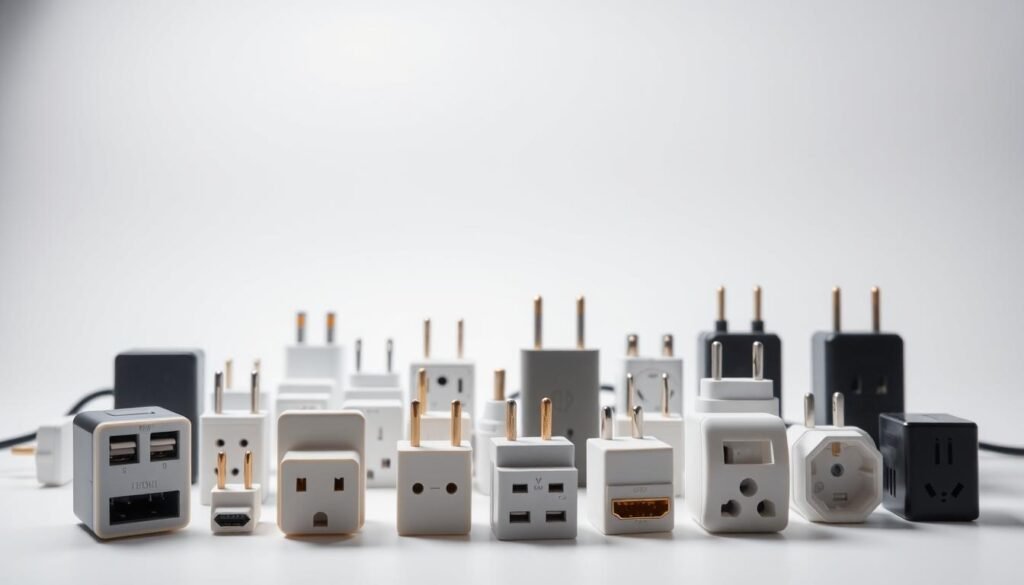
Popular Adapter Categories At A Glance
Universal travel kits work across many countries and are efficient for multi‑stop trips. They usually handle one AC plug at a time and save space for frequent flyers.
USB wall chargers with interchangeable heads are ideal for phones and tablets. They consolidate ports and reduce the need for multiple power bricks.
Travel power strips suit families or business travelers who need several outlets in a hotel room. They often add surge protection and extra USB ports.
Individual plug adapters and plug sets remain the most compact choice for single‑country trips or consultants who visit varied locations during the year.
| Category | Best For | Pros | Cons |
|---|---|---|---|
| Universal Travel Kit | Multi‑country itineraries | One device covers many regions | Usually one AC outlet at once |
| USB Wall Charger | Multiple phones/tablets | Compact, many ports | May need local heads for AC |
| Travel Power Strip | Families, conferences | Multiple outlets, USB ports | Heavier, bulkier to pack |
| Individual Plug Set | Single‑country stays | Lightweight, very compact | Requires buying several for multi‑stop trips |
When voltage differs, choose a converter or confirm dual‑voltage chargers instead of relying on a plug interface alone. Travelers should list required ports and plugs per device before buying to avoid last‑minute scrambles.
Tip: Match the solution to itinerary, load, and convenience priorities for reliable power on the road.
Adapter Types By Country
Across the globe, a handful of plug families cover most outlets travelers will meet. This quick guide maps common patterns so travelers can pick the right plug before departure.
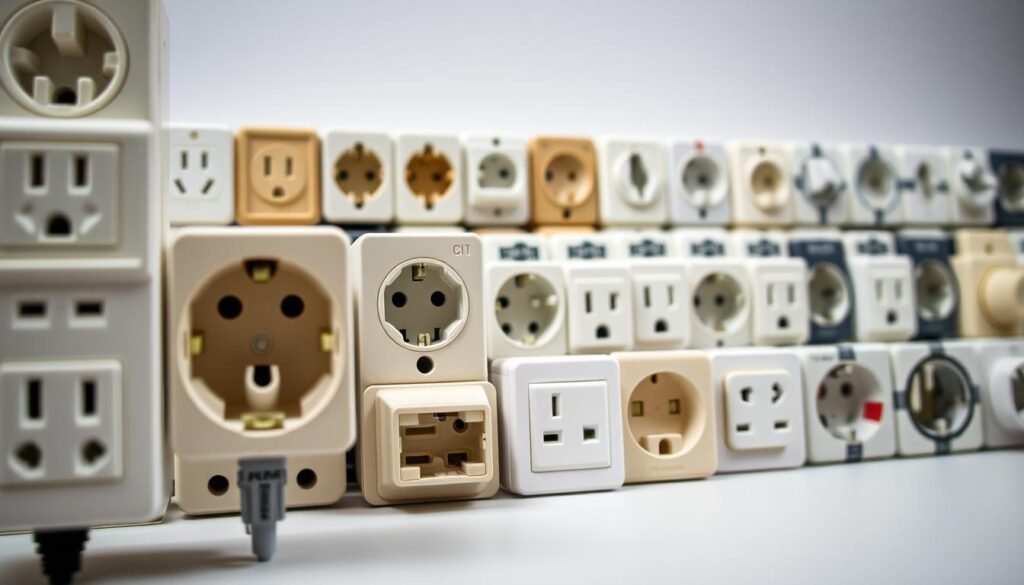
Type A And Type B: United States, Canada, And Japan
Type A is ungrounded and common in North America and Japan. Type B adds a grounding pin for safer high-wattage use.
Type C, Type E, And Type F: Two Round Pins Used Across Europe
These use two round pins and are widely used across europe. E and F add different earthing methods while C remains a slim europlug for low-power gear.
Type G: United Kingdom And Hong Kong
Type G uses three rectangular pins and a built-in fuse. It is a national standard in the UK and Hong Kong and emphasizes safety.
Type I: Australia, New Zealand, And China
Type I has two flat pins in a V plus an earth pin. It is standard in Australia, New Zealand, and parts of China.
Type D And Type M: India And Parts Of Africa
Type D and the larger Type M form a triangle of round pins. They appear in India, South Africa, and neighboring regions; verify local installations first.
Type N: Brazil And Regional Variations
Brazil commonly uses Type N and C. Regional outlet differences mean travelers should confirm hotel listings or bring a universal solution for multiple countries.
| Region | Common Plug | Note |
|---|---|---|
| North America, Japan | Type A / B | Grounding on B; most chargers accept 100–120 V |
| Europe | Type C / E / F | Two round pins; many countries use 220–240 V |
| UK, Hong Kong | Type G | Fused plugs; robust safety standards |
| Australia / NZ / China | Type I | V‑shaped flat pins plus earth |
How To Choose The Right Adapter
Start with the device label: confirm input voltage and frequency to decide whether a simple plug solution or a converter is required.
Check voltages, frequencies, and dual-voltage requirements.
- Read the charger: “Input 100–240 V, 50/60 Hz” usually means only a local plug is needed.
- If the device shows a single voltage, include a converter or a dual-voltage replacement.
- Remember: a plug interface does not change voltage; converters do.
Match wattage for high‑draw appliances and travel needs.
- Assess continuous load for hair dryers, irons, and similar appliances before connecting.
- A compact travel unit may not handle high wattage safely; use rated gear or a converter rated for the load.
Plan multi‑country trips with universal or set-based solutions.
- Favor a universal travel unit or a curated plug set when visiting several countries.
- Choose a travel USB wall charger when most items charge over USB; keep AC outlets for high‑power devices.
- Consider a travel power strip in rooms with limited sockets, but verify total load and avoid daisy‑chaining.
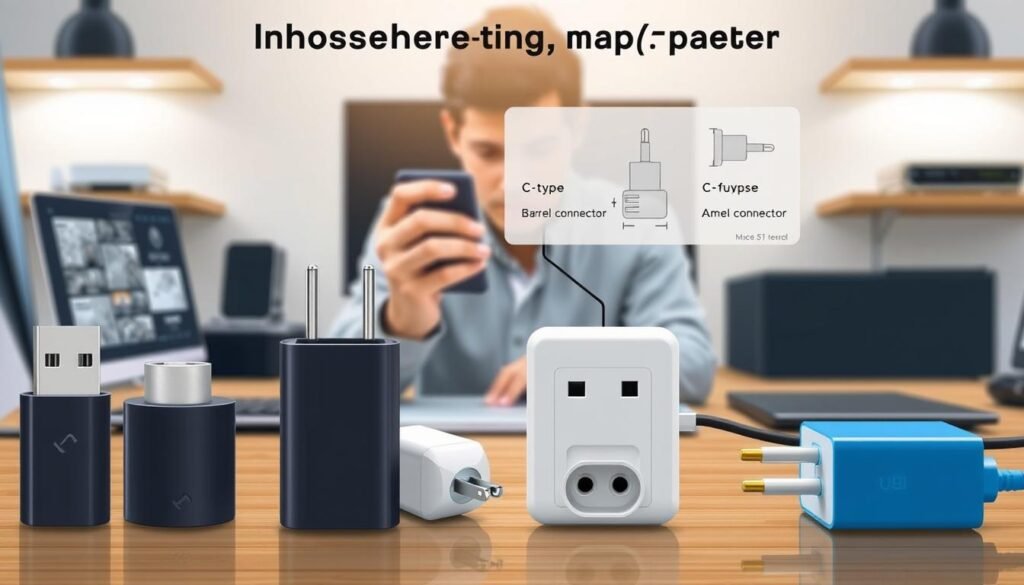
Quick checklist (one‑step decision): voltage, plug type, wattage, number of ports, and itinerary countries. Pack a spare critical cable to avoid delays during presentations or work trips.
Safety, Quality, And Compliance
Good safety practices start with the hardware you trust. When devices meet recognized marks, they reduce the chance of failure and protect connected gear.
Look For UL, CE, And Built‑In Surge Protection
Buy products that display UL (U.S.) or CE (EU) conformity marks. These labels mean the unit met baseline safety and manufacturing checks.
Prefer travel kits and chargers with built‑in surge protection in regions with unstable power to shield phones, laptops, and other sensitive electronics.
Avoid Overheating: Load Limits, Time Of Use, And Ventilation
Respect the stated voltage and load ratings. Compact gear is not designed for long runs with high‑wattage appliances like hair dryers.
Limit continuous run time for enclosed devices and keep outlets clear so air can circulate. Stacking multiple units increases thermal risk and should be avoided.
Inspect, Replace, And Maintain For Long‑Term Reliability
Check plugs and cords regularly. Replace items that show discoloration, loose pins, or cracked housings immediately.
Test critical setups at home before travel. Use properly fused Type G plugs and compatible European recessed sockets where required.
- Verify UL and CE marks; avoid no‑name products with inconsistent build quality.
- Choose surge‑protected units for unstable grids to protect voltage‑sensitive devices.
- Respect load ratings; do not run high‑wattage appliances on compact gear for long periods.
- Inspect for wear and replace damaged units; test setups before travel.
- Buy from reputable U.S. retailers or established online sellers for genuine returns and support.
For a deeper look at certification details and compliance, consult this guide to power supply certifications: power supply certifications and safety marks.
Travel Scenarios And Practical Tips
Smart planning for power needs saves both time and stress when packing for a trip. A quick review of which power outlets a destination uses helps travelers buy the right gear and avoid costly last‑minute purchases.
Single‑Country Trips: Pick The Exact Plug
For a one‑country stay, choosing the exact plug plug adapter is the lightest, simplest, and least expensive option. It reduces bulk and fits neatly in a pouch.
Confirm the country’s outlet and voltage, then buy a dedicated unit that matches that country’s sockets and expected load for devices like laptops or hair tools.
Multi‑Country Itineraries: Universal Power Adapters And Sets
When visiting several countries, a universal power adapter or a curated plug set gives the best coverage. Confirm the supported regions—most universal units cover A/B, E/F, G, and I—and match them to the itinerary.
Example: Pairing a universal power adapter with a 4‑port USB charger handles phones, tablets, and a laptop for a two‑week, five‑country trip.
Packing And Organization: Labeling, Pouches, And Cable Management
Label each piece (EU, UK, AU) and keep plugs in small pouches to avoid searching at security or in hotels. Pre‑coil and tie cables to save space and reduce tangles.
Use a multi‑port USB wall charger to consolidate bricks and free the wall for AC‑only items. Carry a short backup USB‑C to HDMI/VGA and an extra USB‑A cable for cross‑compatibility.
Where To Buy In The United States: Airports, Retailers, And Online
Buy early in the U.S. when possible. Airports (Hudson News, Brookstone) sell last‑minute solutions but at higher prices and with fewer choices.
Big‑box retailers like Best Buy, Walmart, Target, and Home Depot offer common power adapters and chargers at reasonable prices. For the widest selection and better value, shop online and compare specs before purchase.
- Check hotel listings for power outlets and voltage; add a compact power strip if sockets are limited.
- Keep a notecard listing devices, ports, and required voltage to avoid forgetting critical cables.
- Allow extra time before departure to test that all devices power and charge as intended.
For a practical compatibility checklist before travel, consult the compatibility guide to match gear to destinations and devices.
Connectivity Beyond Power
Presenters and remote workers rely on compact video and I/O gear to turn hotel rooms and conference halls into productive workspaces.
Reliable connectivity extends beyond supplying power. It means having the right video output, extra ports, and audio paths so meetings and home setups run smoothly.
Presentations And Meetings: USB‑C To HDMI/VGA
Carry a compact USB‑C to HDMI for modern projectors and a secondary VGA option for legacy rooms.
Tip: many laptops require DP Alt‑Mode or DisplayLink support for multiple displays. Check device specs before buying to avoid compatibility issues.
Bring short, certified HDMI cables and a powered dongle when using phones or tablets that need extra power for stable video output.
Home Office And Entertainment: Hubs, Docks, And Audio Breakouts
Small travel hubs add Ethernet, extra USB‑A ports, and an external display port for reliable hotel Wi‑Fi and better work performance.
For home offices, larger docks supply persistent ports and charging while audio breakouts link studio headphones, mixers, or 1/4 inch jacks to laptops and tablets with 3.5 mm outputs.
- Test video and I/O gear with primary laptops before important meetings to avoid surprises.
- Keep a spare unit in the bag to cover unexpected connector needs at client sites.
- Reserve bus‑powered dongles for travel; use full docks at a fixed workspace for greater power and port density.
- Some venues supply house cables but not specific plugs—self‑reliance prevents delays.
| Use Case | Recommended Gear | Key Benefit |
|---|---|---|
| Conference Presentation | USB‑C to HDMI, VGA backup, short HDMI cable | Fast setup; compatibility with old and new projectors |
| Hotel Workspace | Compact travel hub (Ethernet + USB‑A + HDMI) | Reliable internet and more ports for peripherals |
| Home Office | Full dock with power delivery and audio breakout | Persistent ports, single-cable laptop docking |
| Studio/AV | 3.5 mm to 1/4 inch breakout, optical outputs | Clean audio paths for headphones and mixers |
For detailed component guidance and business‑grade recommendations, see this practical overview at understanding connectors and features and quick selection tips at navigating connector selection.
Conclusion
A clear plan for power gear saves time and prevents device failures on the road.
Confirm the plug shape and the electrical rating on each charger. Remember: a plug mapping only adjusts shape; converters change voltage. Check labels to avoid damage to phones, laptops, and other devices.
Choose universal kits for multi‑country trips and single, targeted pieces for short stays. Invest in UL/CE‑marked gear and inspect items before use to reduce risk with high‑draw appliances.
Map devices, ports, and destinations, pack labeled pouches, and test setups at home. For fundamentals, revisit the Introduction and for detailed options, review the section on adapter types. With the right plan, plugs, and gear, travelers can power and connect anywhere with minimal hassle.
